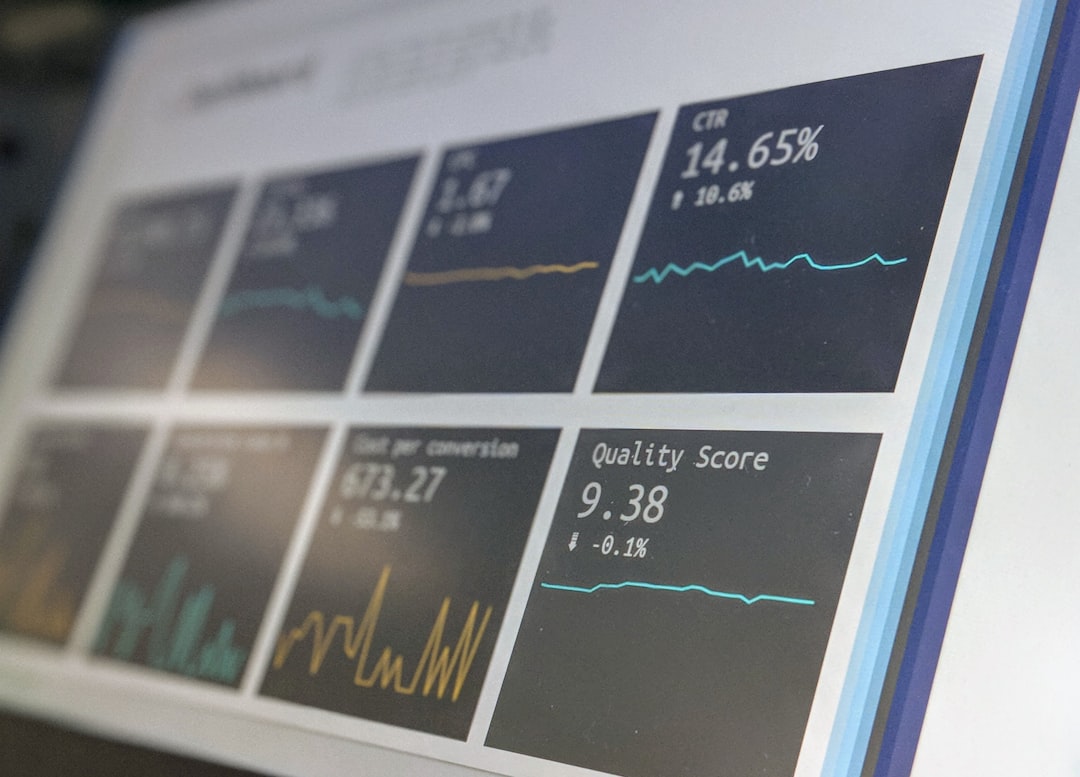Optimizing Income and Taxes for Location Independent Professionals

Introduction
Location independent professionals—freelancers, consultants, remote employees, creators and entrepreneurs—enjoy the freedom to work from any corner of the globe. That freedom comes with a unique set of financial challenges. Income can arrive from multiple jurisdictions, tax obligations may shift as you move, and legal residency rules can affect everything from health insurance to banking.
The goal of this guide is to give you a clear roadmap for optimizing both income and taxes while you travel. You will learn how to choose a tax‑friendly residency, structure your earnings for lower liability, take advantage of international tax treaties, protect your assets with appropriate legal entities, and keep accurate records that satisfy auditors worldwide. The strategies presented are practical, scalable and adaptable to a wide range of professions.
Understanding Tax Residency
The Core Concept
Tax residency determines which country has the primary right to tax your worldwide income. Most nations use a “physical presence” test, a “center of vital interests” test, or a combination of both.
- Physical presence: A set number of days spent in a country (often 183 days) triggers residency.
- Center of vital interests: Where your family, property, and economic activities are concentrated.
A single individual can be considered a tax resident of more than one country at the same time. When that happens, double taxation agreements (DTAs) step in to allocate taxing rights and provide relief.
Common Residency Models for Nomads
- Home‑based tax residency: You keep a permanent address in a low‑tax jurisdiction and limit time abroad to stay under the physical presence threshold.
- Territorial tax regimes: Countries such as Panama, Georgia, and Paraguay tax only income earned within their borders. If you earn from foreign clients, you may pay little or no tax locally.
- Nomad‑friendly “digital nomad visas”: Some governments issue visas that expressly allow you to remain tax non‑resident while you work remotely for foreign clients.
Choosing the right model depends on your income sources, travel patterns and long‑term goals.
Structuring Income for Tax Efficiency
Separate Business and Personal Finances
Creating a clear boundary between business and personal cash flow is the foundation of tax optimization. It makes it easier to claim deductions, reduces audit risk and simplifies the process of opening corporate bank accounts.
- Open a dedicated business account in the jurisdiction where you incorporate.
- Use a corporate credit card for business expenses only.
- Pay yourself a salary or distribution that aligns with the tax rules of your residency.
Salary vs. Distribution
Many jurisdictions tax salaries as ordinary income but treat dividends or profit distributions differently. By paying yourself a modest salary to satisfy local social security requirements and taking the remainder as a dividend, you can often lower overall tax.
- Salary: Subject to income tax, payroll taxes, and sometimes mandatory social contributions.
- Distribution: May be taxed at a lower rate or not at all, depending on the jurisdiction and any applicable tax treaty.
Use of Offshore Entities
Offshore companies can be valuable tools for location independent professionals, especially when you have clients in multiple countries.
- Limited Liability Company (LLC) in the United States: Pass‑through taxation, no corporate tax if you elect to be treated as a disregarded entity.
- International Business Company (IBC) in Belize or Seychelles: Low or zero corporate tax, flexible ownership structures.
- European Private Limited Company (GmbH, Ltd, SARL): Provides credibility with European clients and may allow you to benefit from EU tax treaties.
When using an offshore entity, be aware of reporting obligations such as FATCA, CRS and local economic substance requirements.
Currency Management
Earning in multiple currencies can create hidden tax liabilities if you convert funds at unfavorable rates.
- Keep income in the currency of the client whenever possible.
- Use multi‑currency accounts or fintech platforms that allow you to hold and spend in several currencies without constant conversion.
- Record the exchange rate used for each transaction to support your tax filings.
Leveraging International Tax Treaties
What a DTA Does
A double taxation agreement is a bilateral treaty that allocates taxing rights between two countries. It typically provides:
- Residence tie‑breaker rules to decide which country has primary residency.
- Reduced withholding tax rates on dividends, interest and royalties.
- Exemption or credit mechanisms to avoid being taxed twice on the same income.
How to Use a DTA
- Identify the treaty that exists between your tax residency country and the country where your client is located.
- Determine the type of income (service fees, royalties, interest) and the treaty article that applies.
- Apply the reduced rate on any withholding tax that the client’s country may deduct.
- Claim a foreign tax credit or exemption on your home‑country tax return for the tax already paid abroad.
Practical Example
You are a U.S. citizen living under a digital nomad visa in Portugal. Your client is based in Germany and will withhold 15 % German tax on the invoice. The U.S.–Germany DTA limits the withholding to 0 % for independent personal services, while the Portugal–Germany DTA reduces it to 5 %.
- Request the German client to apply the 5 % rate, providing a certificate of residence from Portugal.
- Report the gross income on your Portuguese tax return.
- Claim a credit for the 5 % German tax paid, eliminating double taxation.
Choosing the Right Legal Structure
Sole Proprietorship
- Pros: Simple to set up, minimal compliance, income taxed as personal income.
- Cons: No liability protection, limited ability to split salary and distribution, may be less credible for larger corporate clients.
Limited Liability Company (LLC)
- Pros: Personal liability protection, flexible profit allocation, pass‑through taxation in many jurisdictions.
- Cons: Requires filing articles of organization, annual reports and possibly franchise taxes.
Corporation (C‑Corp, Ltd, GmbH)
- Pros: Strong liability shield, ability to issue shares, may benefit from lower corporate tax rates.
- Cons: Double taxation of dividends in many countries, more complex compliance.
Hybrid Structures
Some professionals create a “dual‑entity” setup: an offshore holding company that owns a local operating company. The operating company invoices clients and pays fees to the holding company as management fees. This can shift profit to a low‑tax jurisdiction while keeping the operating entity compliant locally.
Factors to Consider
- Where you spend most of your time – local substance rules may require a physical office or employees.
- Nature of your clients – corporate clients may prefer a European entity for VAT compliance.
- Future plans – if you anticipate raising capital, a corporation may be more attractive.
Banking, Payments and Financial Infrastructure
Multi‑Currency Business Accounts
Fintech providers such as Wise, Revolut Business and Payoneer offer accounts that let you hold, receive and pay in dozens of currencies. Benefits include:
- Lower conversion fees compared with traditional banks.
- Local bank details (IBAN, routing number) for key markets.
- Easy integration with accounting software via APIs.
Credit Cards for Nomads
A credit card that does not charge foreign transaction fees and offers robust travel protections is essential. Look for cards that provide:
- No annual fee or a fee that is offset by rewards.
- Global acceptance (Visa or Mastercard).
- Ability to link to your business account for direct expense tracking.
Managing Tax‑Relevant Transactions
- Tag each transaction as “income”, “salary”, “dividend”, “expense”, or “investment”.
- Keep receipts in a cloud storage folder organized by year and category.
- Use accounting software that can generate reports in the currency required for each tax jurisdiction.
Deductions, Credits and Expense Management
Common Business Deductions
- Home office: Allocate a portion of rent, utilities and internet based on the square footage used exclusively for work.
- Travel: Flights, accommodation, meals and local transport when directly related to client work.
- Equipment: Laptops, cameras, software licenses and peripherals.
- Professional services: Accounting, legal counsel, marketing and consulting fees.
- Health insurance: Premiums may be deductible in certain jurisdictions, especially if you are self‑employed.
Country‑Specific Credits
- Foreign tax credit: Reduces domestic tax liability by the amount of foreign tax paid on the same income.
- Tax treaty exemptions: Some treaties exempt certain types of income from tax altogether.
- R&D credit: If you develop proprietary software or digital products, many countries offer credits for qualifying research expenses.
Record‑Keeping Best Practices
- Store digital copies of all receipts for at least seven years.
- Maintain a mileage log with dates, purpose and kilometers driven.
- Keep a separate ledger for personal versus business expenses to avoid commingling.
Practical Tools and Resources
Accounting Software
- Xero: Cloud‑based, strong multi‑currency support, integrates with most fintech accounts.
- QuickBooks Online: Widely used, good for U.S. tax forms, offers a dedicated “Self‑Employed” version.
- Wave: Free for basic invoicing and bookkeeping, suitable for freelancers with modest revenue.
Tax Preparation Platforms
- TaxAct and TurboTax: Good for U.S. citizens filing abroad, include foreign earned income exclusion calculations.
- Sage Business Cloud Accounting: Popular in the UK and EU, handles VAT and local filing.
- Local tax consultants: In high‑risk jurisdictions, a professional can ensure compliance with complex local rules.
Community Resources
- Nomad tax forums: Reddit’s r/expattax and Facebook groups often share up‑to‑date filing experiences.
- Country‑specific guides: Websites such as Nomad Tax and The Remote Nomad publish annual updates on residency and tax law changes.
Common Mistakes to Avoid
- Assuming no tax because you are “outside” a country – Many nations tax based on residency, not physical presence alone.
- Failing to file foreign bank account reports – Penalties for non‑compliance with FATCA or CRS can be severe.
- Mixing personal and business expenses – This can invalidate deductions and trigger audits.
- Neglecting social security obligations – Some countries require contributions even for self‑employed digital nomads.
- Overlooking local VAT or GST – Providing services to EU clients may obligate you to register for VAT under the reverse charge mechanism.
Building an Action Plan
Step 1: Assess Your Current Situation
- List all sources of income, their currencies and the countries of your clients.
- Identify where you have spent the most days in the past 12 months.
- Determine your current tax residency status in each relevant jurisdiction.
Step 2: Choose a Primary Tax Residency
- Evaluate low‑tax or territorial regimes that align with your travel pattern.
- Consider applying for a digital nomad visa that explicitly offers tax non‑residency.
- If you already have a favorable residency, ensure you stay below the physical presence threshold in other countries.
Step 3: Set Up a Legal Entity
- Register an LLC or equivalent in a jurisdiction that offers favorable treaty networks.
- Open a business bank account and connect it to your accounting software.
- Draft an operating agreement that outlines salary, profit distribution and ownership percentages.
Step 4: Implement Income Structuring
- Pay yourself a reasonable salary to satisfy any local payroll or social security requirements.
- Allocate remaining profits as dividends or management fees to the holding company.
- Use a multi‑currency account to receive client payments directly in their local currency.
Step 5: Optimize Deductions and Credits
- Calculate home office square footage and apply the proportionate expense.
- Track all travel and equipment purchases with receipts stored digitally.
- Review applicable tax treaties for reduced withholding rates and claim foreign tax credits where eligible.
Step 6: Establish Ongoing Compliance
- Set calendar reminders for quarterly estimated tax payments in each jurisdiction.
- File annual foreign asset reports before the deadline.
- Review travel itinerary each quarter to ensure you do not unintentionally trigger residency in another country.
Step 7: Review and Adjust Annually
- Re‑evaluate your residency choice based on any changes in travel frequency or tax law.
- Consider restructuring your entity if new treaties become available or if your revenue level changes.
- Consult a tax professional before making major moves such as moving to a new jurisdiction or selling a substantial asset.
Conclusion
Optimizing income and taxes as a location independent professional is a continuous process that blends strategic planning, disciplined record‑keeping and a solid understanding of international tax rules. By selecting a tax‑friendly residency, structuring your earnings through appropriate legal entities, leveraging double taxation agreements and diligently tracking deductions, you can keep more of what you earn while staying compliant across borders.
The tools, resources and step‑by‑step actions outlined in this guide provide a practical framework that you can adapt to your unique circumstances. Treat your tax strategy as an integral part of your nomadic lifestyle, and you will enjoy both the freedom of the open road and the financial security of a well‑managed tax plan.
Random Posts

Thriving on the Move Nutrition Strategies for Digital Nomads
Learn practical nutrition hacks for digital nomads, how to source fresh food, sync meals with shifting time zones, and turn eating into a productivity boost wherever you work.
2 months ago

Mastering Remote Work and Productivity for Digital Nomad Entrepreneurs
Learn how to turn the freedom of digital nomad life into consistent productivity with proven systems, habits and tools for remote work, finance, and client management so you can thrive anywhere.
1 month ago

Bali Budget Blueprint for Digital Nomads
Discover how far your money can stretch in Bali with a detailed budget guide for digital nomads, covering visas, housing, food, coworking, and smart savings tips for any comfort level.
1 month ago

Essential Task Management Strategies for Distributed Teams
Learn practical task-management tactics that keep remote teams aligned, avoid duplicated work, and hit deadlines with actionable steps, real examples, and the best collaboration tools.
2 months ago

Nomad Finance Legal Tips Health Insurance and Emergency Preparedness
Learn essential legal and tax basics for digital nomads, choose the right health and travel insurance, and master emergency preparedness so your location-independent life stays safe and stress-free.
1 week ago
Latest Posts

Essential Software Every Remote Professional Should Use
Master remote work with essential tools: instant messaging like Slack, high definition video calls such as Zoom, and asynchronous voice apps. Streamline communication, stay connected and boost productivity.
1 day ago

Mastering Remote Work Productivity for Digital Nomads and Freelancers
Learn proven habits, tools, and tactics that help digital nomads and freelancers stay focused, deliver quality work, and maintain a sustainable lifestyle while traveling the world.
1 day ago

Tech‑Friendly European Towns Perfect for Remote Living
Discover Europe’s best small towns where fast internet, affordable living and vibrant tech communities let you work remotely while soaking up historic charm, lakeside views or mountain air.
1 day ago